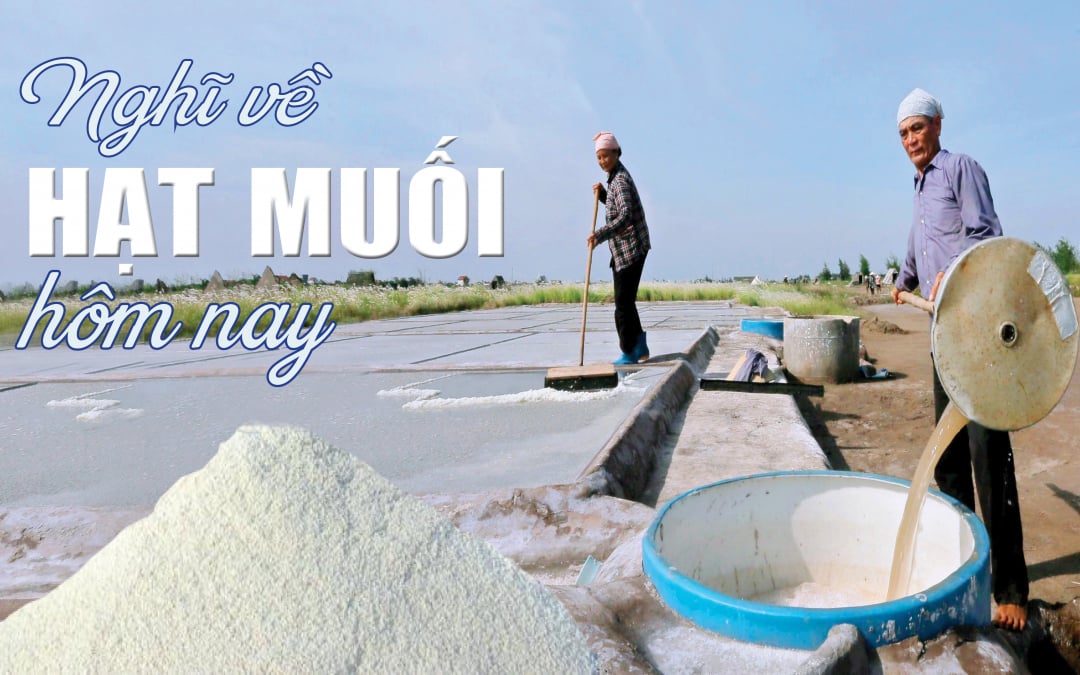 |
Hai Dong Commune (Hai Hau) - a place at the foot of the waves, for generations, salty salt grains, crystallizing the flavor of the sea, are a product soaked in the sweat and effort of salt farmers, becoming a profession "passed down from father to son". Although the production area has decreased sharply, the quality of salt is increasingly improved; in which, light sea salt products from Hai Dong salt fields have been exported and are present in "difficult" markets such as Japan.
 |
A new day for Mr. Vu Van Ich's family in Nam Giang hamlet starts at 4am and ends at dusk. At the age of 73, Mr. Ich has spent his whole life working in the salt industry. He shared: In the middle of the 19th century, Hai Dong was also a retreat of the estuary, a place for fishermen to dock their ships and boats. After 1954, land reclamation and sea encroachment were paid attention to; people from many places came here to reclaim land and settle down; the salt land area expanded. Being a land at the foot of the waves, all year round facing natural disasters, storms, floods, sea retreat, and harsh weather. In addition to growing rice and going to sea, all sources of income for salt farmers depend on salt grains; when the weather is favorable, there is enough to eat, but when it rains a lot and there are floods, there are many hardships.
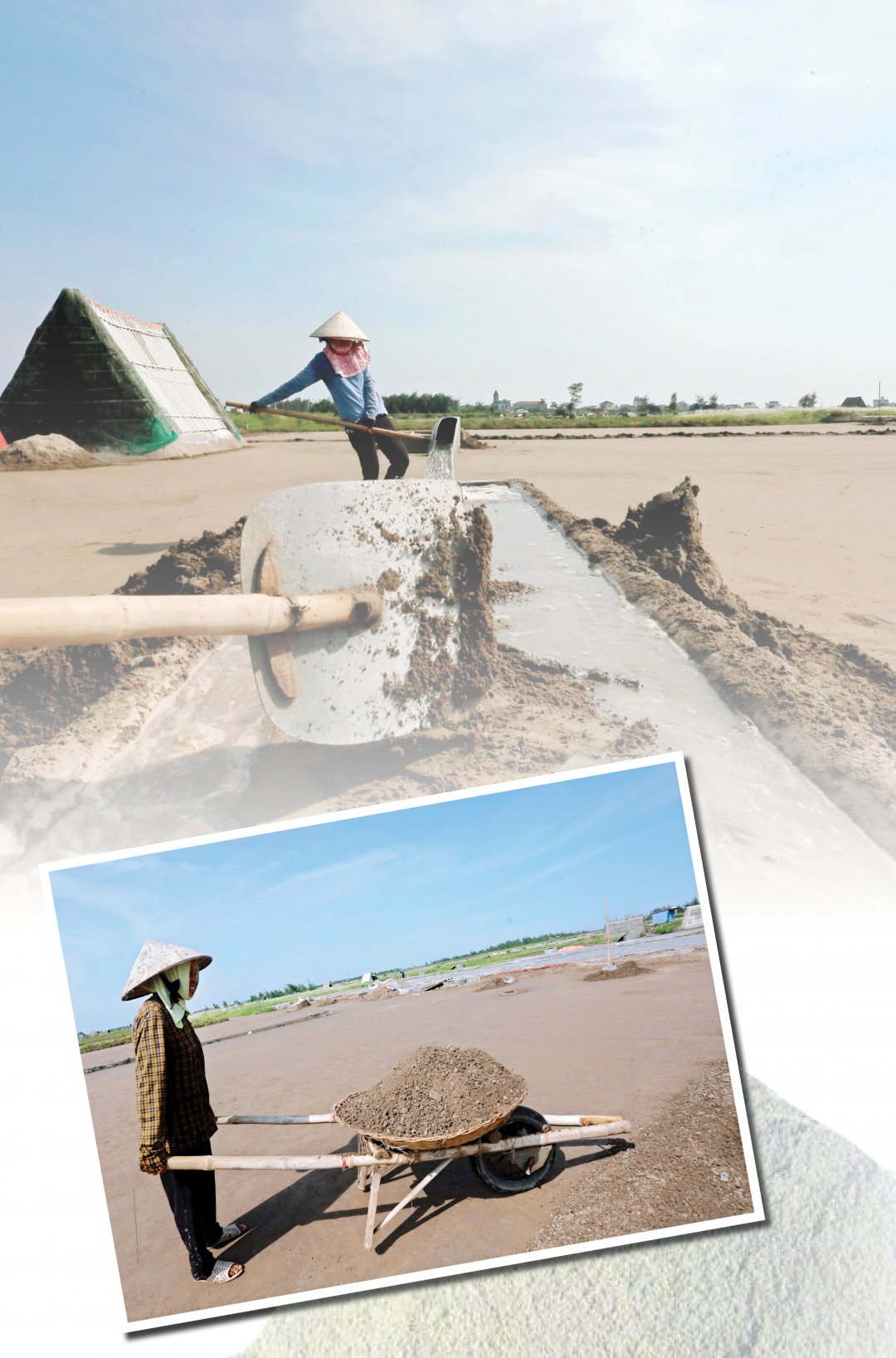 |
| Take the sand and soak it in seawater, then take it out and dry it on the clay floor. Under the sunlight, the seawater evaporates, leaving white salt crystals that crystallize on the sand grains. |
Mr. Ich added: In the 70s and 80s of the last century, the salt industry was "on the rise", creating a stable source of income for salt farmers here. At that time, people said that salt farmers "played, ate for real", because people just took seawater into the fields and sat waiting until the end of the day when the water crystallized into salt, then scooped it up and waited for traders to come buy... (?!) "In fact, the salt industry is hard and laborious, no one can get rich from this profession".
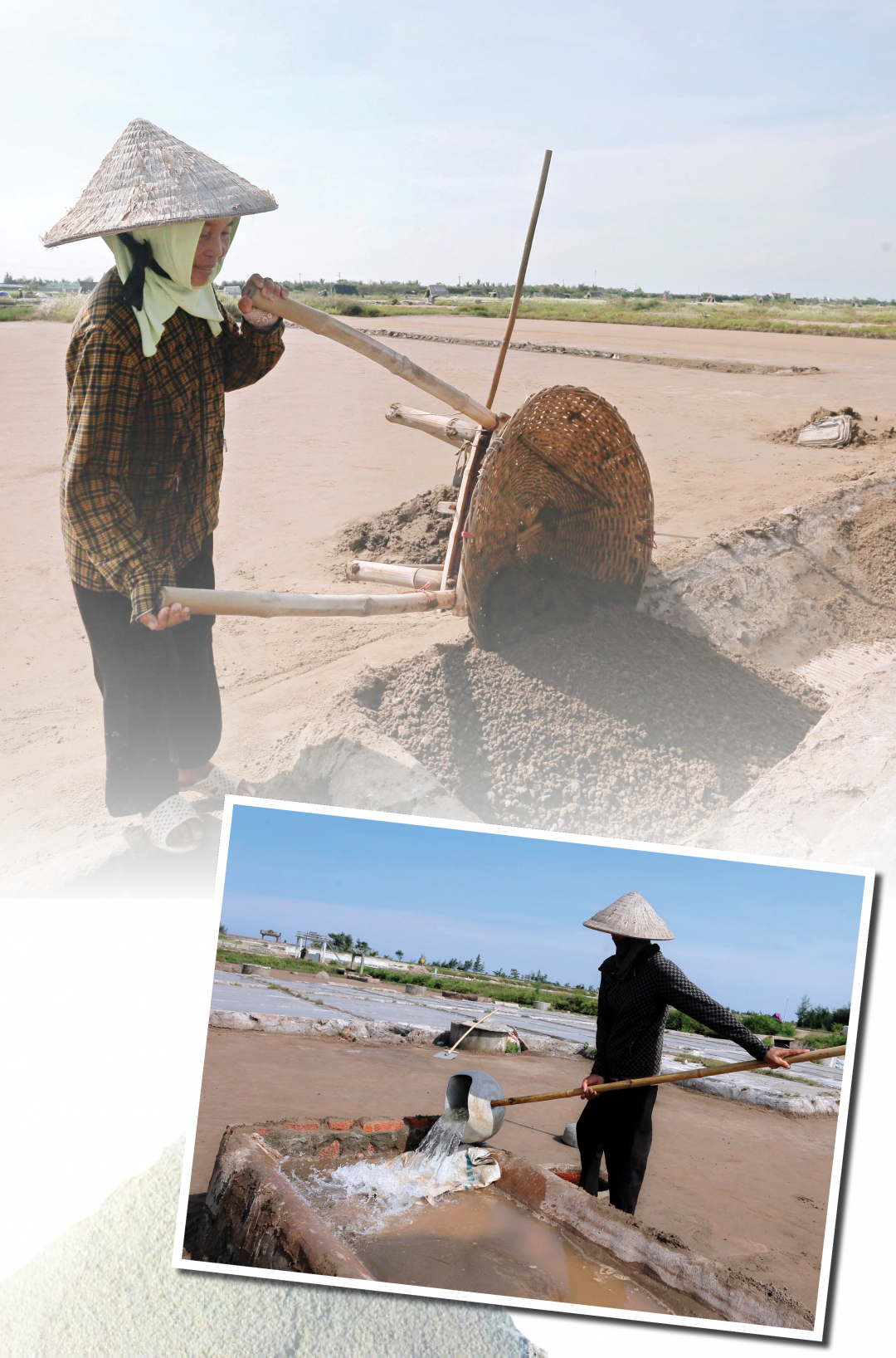 |
| Salt farmers continue to take level 1 salty water, which is sea water, to pour into this sand layer and filter to get level 2 salty water. |
For more than 60 years working with sand, carrying salt, and being attached to the salt industry, Ms. Nguyen Thi Nhung's life has gone through the ups and downs of salt grains. Ms. Nhung confided: "When it's sunny, people run into their houses, while salt workers eagerly go to the salt fields. This job is as hard as anyone else's. The sunnier it is , the higher the temperature is, the happier the salt workers are (!)". Therefore, the lunch of Hai Dong salt workers is usually eaten at 10am, then they take a break, and when the sun is at the top of the bamboo trees, they are busy working in the salt fields under the scorching sun. Salt production time is only 3-5 months each year. During the off-season, people have to work for hire: digging ponds, making ponds, weaving nets... doing all kinds of jobs to make a living.
 |
Unlike the salt making method in the Central and Southern regions, the people of Nam Dinh coastal area in general and the salt farmers of Hai Dong commune in particular make salt by drying in sand. This method is more laborious, but in return, it produces light salt grains with its own characteristics and flavor. In Hai Dong, there are two salt crops each year: the "seasonal salt" crop - the main crop from the beginning of April to the end of the sixth lunar month; the "seasonal salt" crop from the eighth to the end of the tenth lunar month. Seasonal salt yields higher yields because "it gets sunshine, the salt is white", the salt is white, the salt flakes and the salt grains will be more even because there are "many sunny days A" (temperature from 30 degrees Celsius or higher).
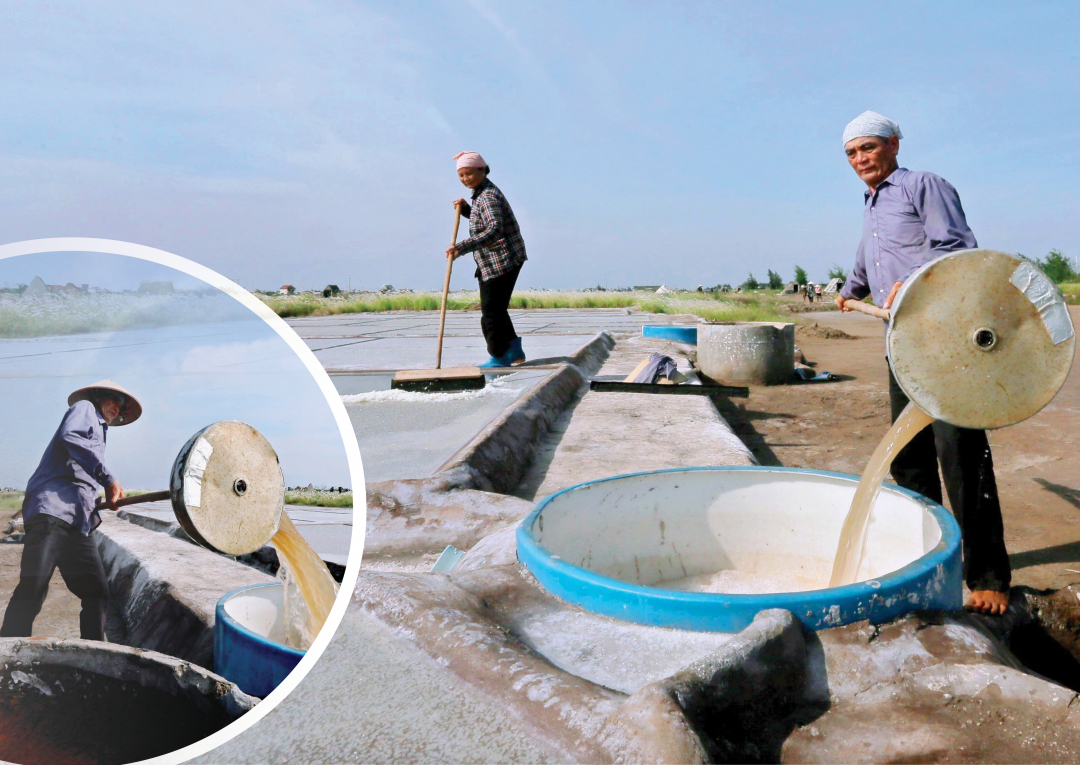 |
| After drying the soil, the next step is to scoop the soil into the filter to get the salt water, then water the salt water from the tank into the drying yard. |
With more than 50 years of experience in the profession, Mr. Nguyen Van Luan said that to make salt, salt workers have to "work hard in the sun and rain". The process of producing sand-dried salt in Hai Dong includes many stages. Step 1: Take sand from the sea, continue to soak it in seawater, then take it up and transfer it to dry on a clay yard. Under the sunlight, the seawater evaporates, and the salt crystals crystallize on the sand grains. Salt workers continue to take level 1 salty water, that is, seawater, to pour into this layer of sand and filter to get level 2 salty water. Salt workers continue to dry the sand and then add level 2 salty water to filter, obtaining level 3 salty water. Step 3: Level 3 salty water after being collected from the filter tank will be transported to the salt fields on the concrete yard for drying. After a sunny day, the salt will be crystallized and harvested. The amount of salt collected is proportional to the time and heat of that day. The final step in the process of making salt from seawater is harvesting, which is also the step that salt farmers look forward to the most. This harvesting takes place between 2 and 5 pm, when the salt has crystallized on the surface of the field.
 |
At dusk on the Hai Dong salt fields, salt is gathered into piles, white. Salt farmers are busy harvesting, laughing; rows of wheelbarrows bring salt to the warehouse. Mr. Do Van Toan shares with us about the "saltiness" of the salt industry. According to Mr. Toan, salt making is hard work because it depends on the weather; the labor is hard but the income of Hai Dong salt farmers is often unstable. During the COVID-19 pandemic, to produce, the cost of production dropped dramatically, only from 800 to 1,000 VND/kg, the production, the salt "stocked", the salt farmers were in trouble. Wiping away the sweat, Ms. Dang Thi Cay smiled: "In the 2023 salt crop, the weather was favorable, many sunny days, the salt was "in season, good price", wherever produced, it was sold in the field; traders bought the finished salt at 2,500 to 3,000 VND/kg". Mr. Nguyen Van Toan continued. “This year, the price of salt has increased, and traders are looking to buy it right at the field. Salt farmers are very excited. Many salt fields that were previously abandoned have now been put back into production.”
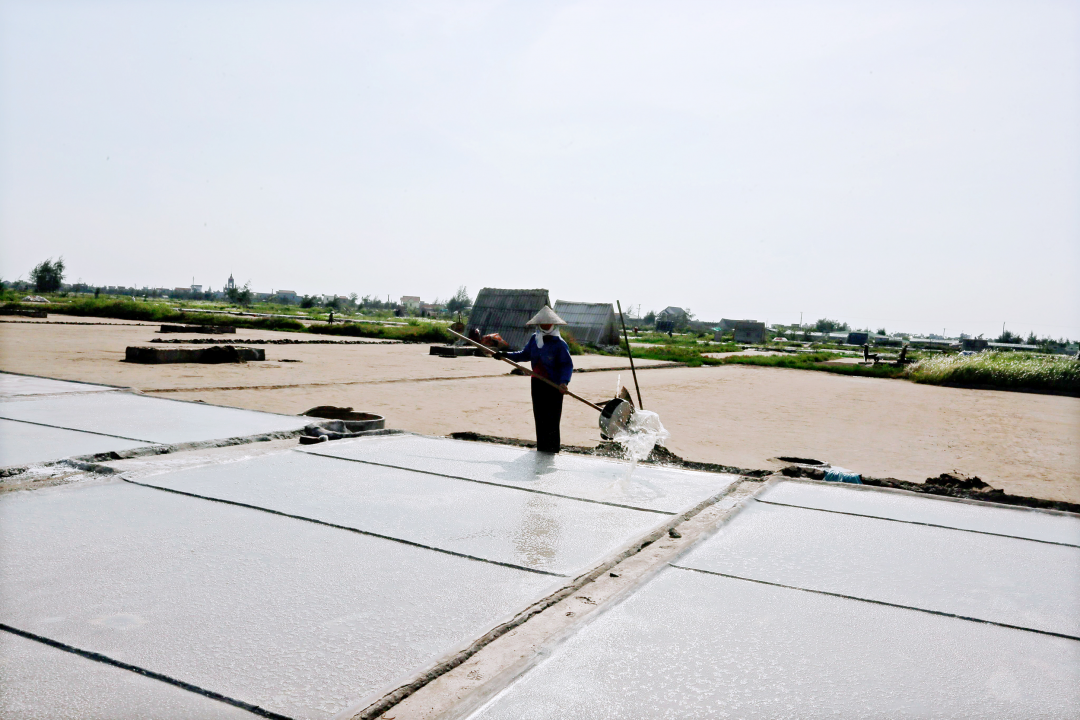 |
| The level 3 saline water collected from the filter tank will be transported to the salt fields on the concrete yard for drying. |
Comrade Nguyen Minh Duong, Chairman of Hai Dong Commune People's Committee, said: The whole commune currently has 110 households with 275 workers working in the salt industry. In the first 6 months of 2023, on an area of over 15 hectares, the number of sunny days at the beginning of the season was high, salt farmers stuck to the sun and fields for production; salt productivity reached 20 tons/ha; salt output reached 380 tons, an increase compared to the same period in 2022. Taking advantage of the sea, Hai Dong planned 8 concentrated and specialized production areas such as: high-quality rice areas, integrated farms, aquaculture, salt production areas, etc. to help people invest in converting crops and livestock, increasing economic value on cultivated areas. In particular, focusing on converting the structure of agricultural production, building OCOP products of clean salt, iodized salt, meeting 3 and 4 star standards.
 |
| Hai Dong salt farmers have a saying: "From grandfather to father, there is a pile of sand that keeps rolling and rolling." To have a grain of salt is the crystallization of the salty taste of the sea, the effort of "selling your back to the sky, selling your face to the sea" of salt farmers in this coastal region. |
To increase the value of salt grains and contribute to increasing the income of salt farmers, the commune mobilizes people to apply science and technology in salt production, improve the infrastructure in the fields to reduce labor. At the same time, proactively find a "direction" for salt grains through linking with companies and businesses in the area to participate in salt consumption for people. Regularly organize classes to disseminate knowledge about food safety, clean salt production, and train quality management programs in production and business for salt farmers and individual households doing salt business.
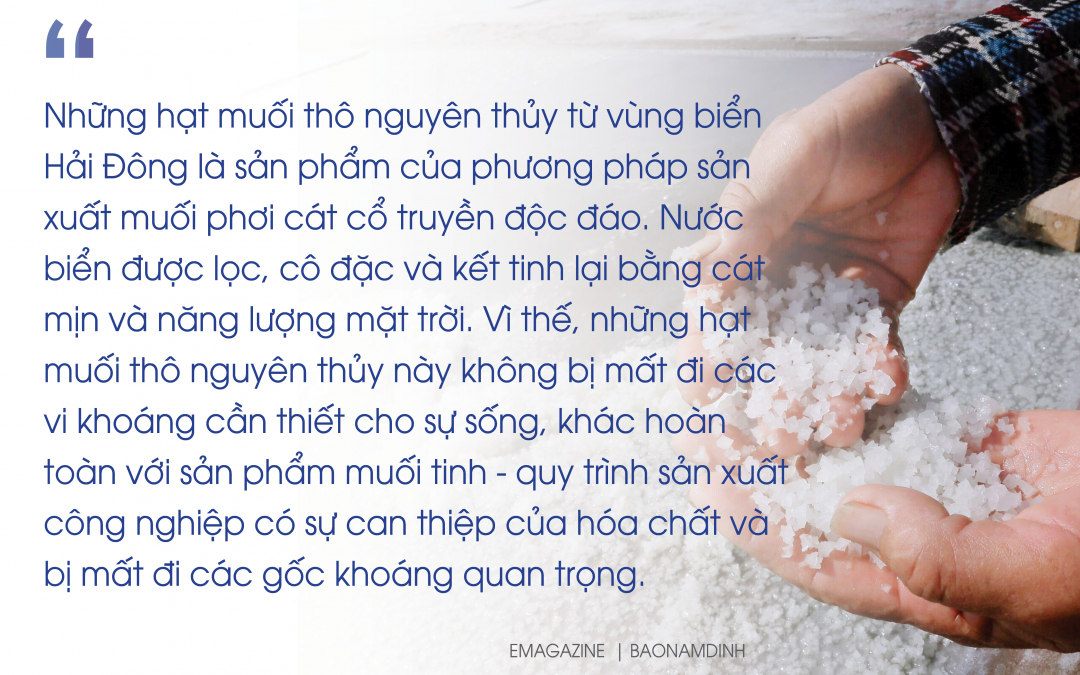 |
Director of Nam Dinh Salt and Trading Joint Stock Company Tran Thi Binh said: For many years, the Company has been producing clean salt, ensuring food safety and protecting the health of domestic consumers. The Company has proactively cooperated with salt farmers in Hai Hau and Giao Thuy districts to expand the clean salt production area; helping salt farmers maintain their jobs and have a more stable income. In Hai Dong commune, the Company invested and signed a contract to consume salt output with an area of 2 hectares.
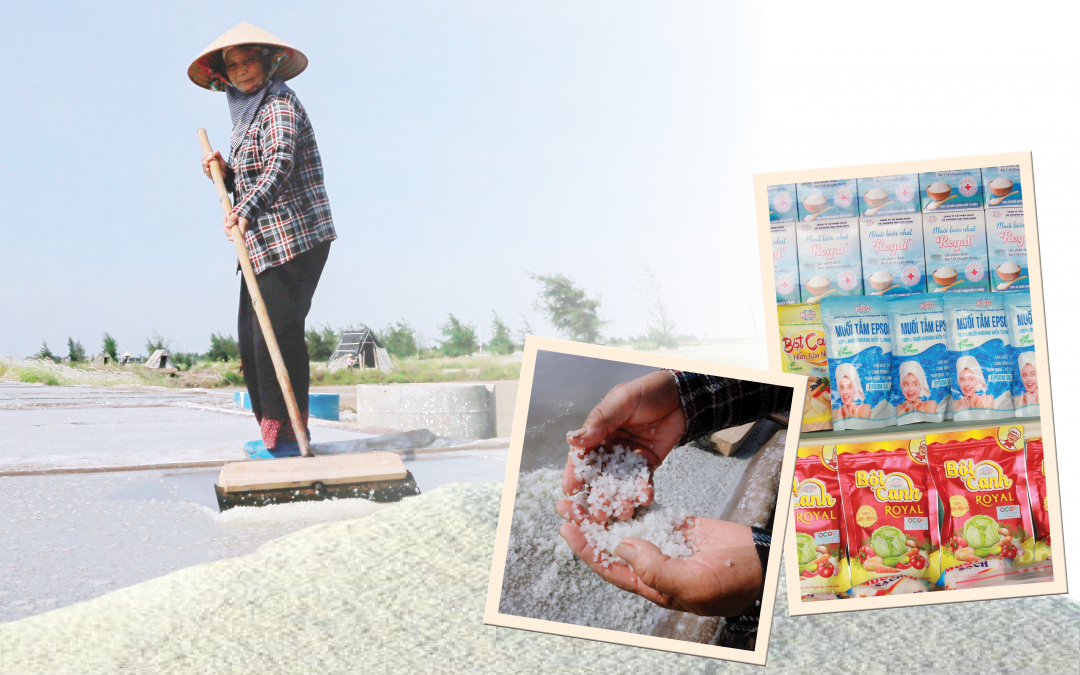 |
| The salty salt grains, crystallizing the flavor of the sea, are a product soaked in sweat, The efforts of Hai Dong salt farmers have become a "father-to-son" profession. |
Implementing the clean salt production linkage with salt farmers, Nam Dinh Salt and Trading Joint Stock Company has invested in production systems and equipment; organized training, propaganda, technical guidance... to change the production mindset of salt farmers to improve the quality and value of salt grains. Accordingly, the Company supports salt farmers in rebuilding salt fields, designing a system of ditches to bring water into the fields and treating seawater right from the beginning to quickly remove harmful impurities. The Company has researched and produced about 20 clean salt products; of which, 5 products have been recognized by the Provincial People's Committee as 4-star OCOP products. In particular, there is 1 product that has been officially exported to the Japanese market since 2017, which is the Japanese salt export product brand NADISALT. According to calculations, each year the Company exports over 100 tons of salt to the Japanese market.
Performed by: Viet Thang
Presented by: Truong Vinh
Publication date: 4-8-2023
Source link








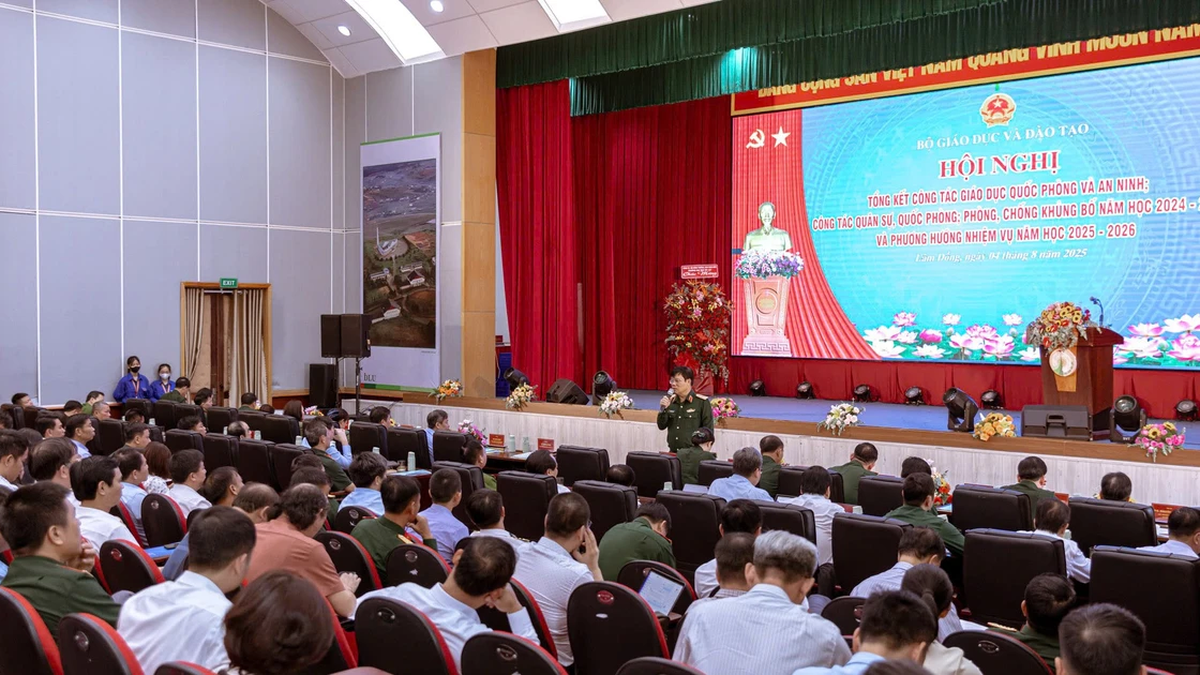


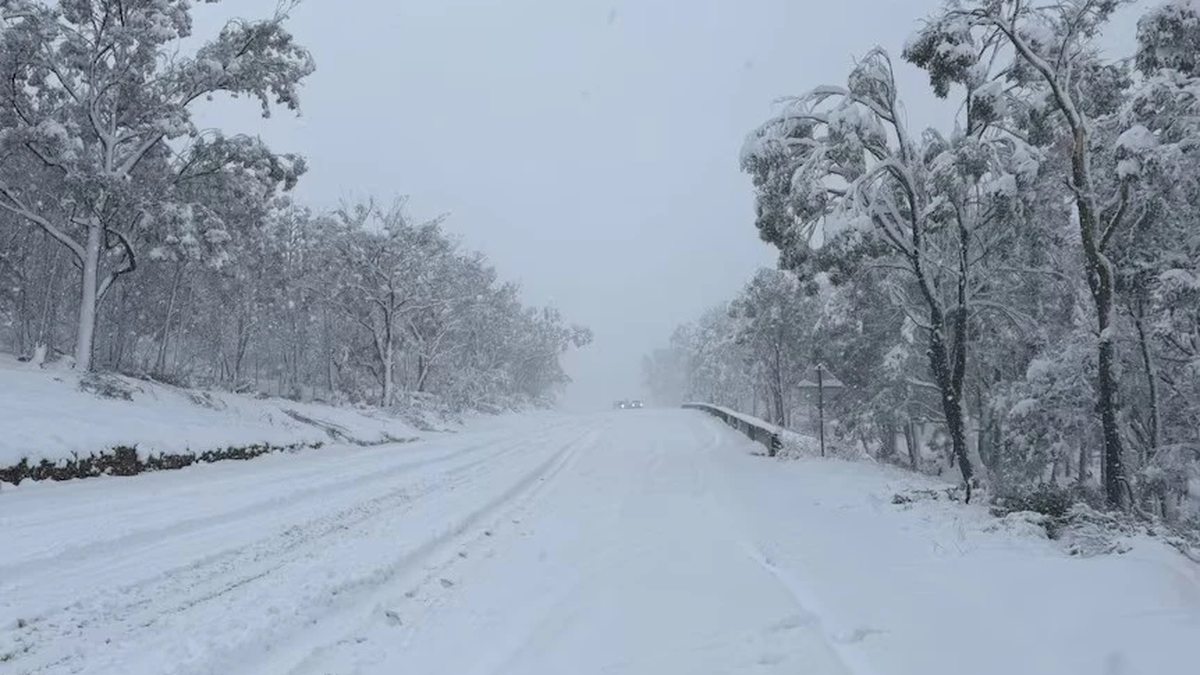







































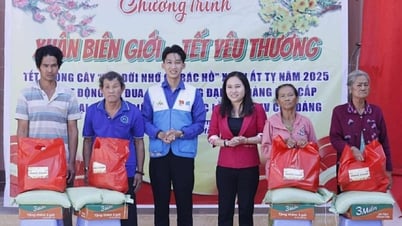



![[Maritime News] Two Evergreen ships in a row: More than 50 containers fell into the sea](https://vphoto.vietnam.vn/thumb/402x226/vietnam/resource/IMAGE/2025/8/4/7c4aab5ced9d4b0e893092ffc2be8327)




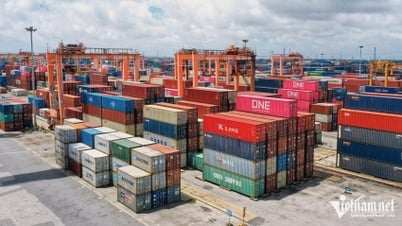
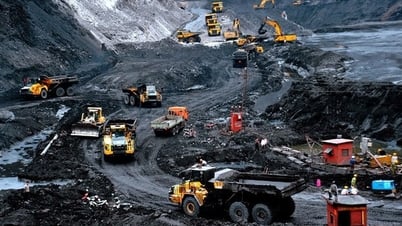

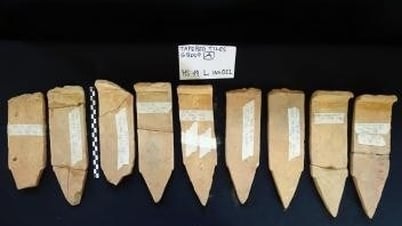







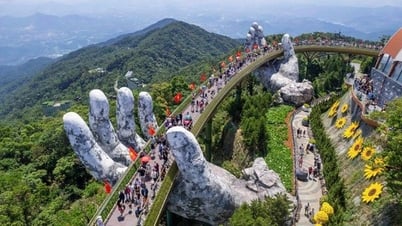

























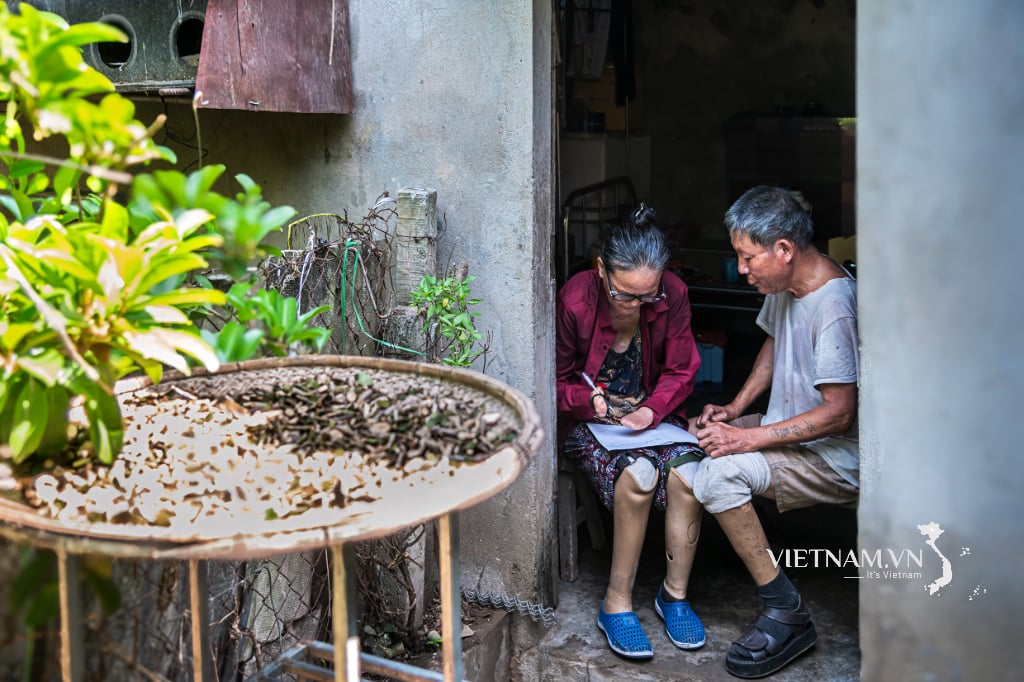


Comment (0)